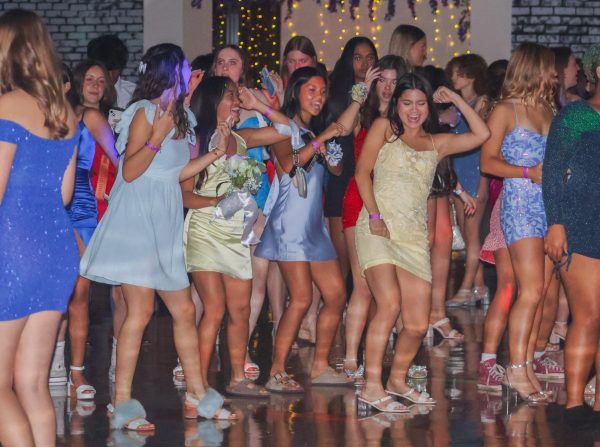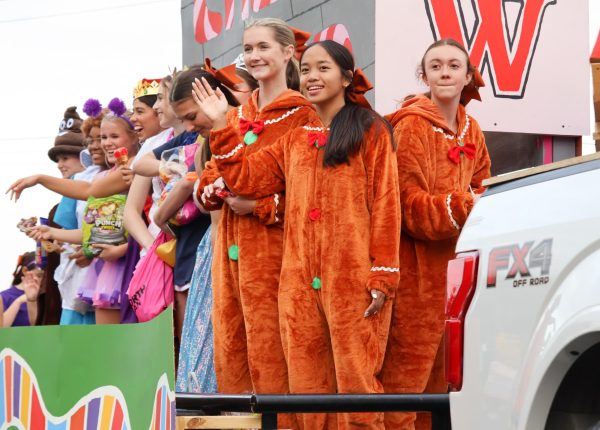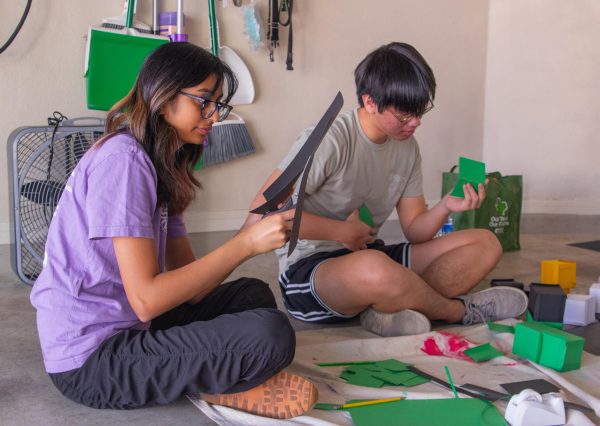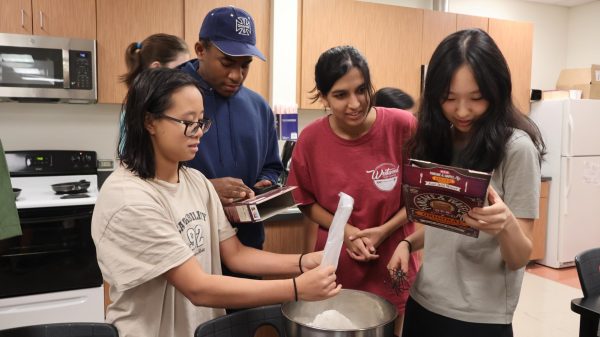Engineering Students Present Their Designs
Photo Courtesy of Sahil Shah '21
Sahil Shah ’21 gets ready to give his EDD presentation alongside his group to his peers and teachers. Before revealing the final solution, he had to prepare a thoughtful speech. “We wanted to target a societal issue that no one else is trying to help out with. Being teenagers, we definitely have an advantage because we know firsthand how and where people’s drinks could be drugged,” Shah said.
Engineering Design and Development (EDD) students gave virtual presentations for their Preliminary Design Review to parents and peers on Thursday, Dec. 3 and Friday, Dec. 4. After spending a few months defining the problem, generating concepts, and selecting solutions, groups were tasked to give a 10 minute presentation explaining their process as well as the practicality of the final solution.
“EDD is a very unique class because I almost never lecture over new content. [The students have] been learning a lot of engineering concepts over the past three-plus years, and they’re putting it all into practice now,” EDD teacher Mr. Bailey Hulsey said. “They have a lot of time to work together in breakout rooms while I cycle around between the groups. Once per week, we have stand-up meetings where we stand up and update the class about our progress. I also schedule a 15-minute check-in meeting with each team once per week to talk about their projects. Overall, I think the structures in the class coupled with the individual freedom really gives all types of students an opportunity to shine.”
Sahil Shah ‘21, Daniel Antov ‘21, and Daniel Brown ‘21 were passionate about solving the issue of drug facilitated sexual assault (DFSA). They spent a lot of their time brainstorming and conducting decision matrices (the process of breaking down each idea and coming up with pros and cons for each). Starting with over 100 ideas, they had to conduct multiple decision matrices until they got down to their top five ideas. In addition, they collected data of outside input using a survey and got over 100 responses in order to help decide what their final product would be. Wanting to help those who have a fear of being drugged in a place full of strangers, they decided on an innovative solution: a transparent lid/strainer, placed halfway within the drink, that collects pills and or powders with the help of the fine-mesh.
“Nobody wants to worry about whether or not their drink could be drugged sometime throughout the night. If we can eliminate that little nagging voice at the back of people’s heads by helping them feel safe, we know we have created a good product,” Daniel Antov ‘21 said.
Similar to the previous group, many others tackled issues that are heavily prevalent in today’s society, such as the need for shorter travel time for ambulances, CO2 reduction in the atmosphere, and the harm of blue-light in devices.
“Some of the issues my students are addressing are striking, urgent, and prevalent like COVID, ambulance response times, and sexual assault,” Mr. Hulsey said. “Others are more niche like storage on a bike or socks getting lost in the washer. In my opinion, this class is less about solving the world’s problems and more about learning problem-solving skills. I think it’s entirely possible and feasible that some of these projects will spawn start-up companies with a wide reach, but it’s almost certain that my students will finish my class much more equipped to tackle whatever problem they set their eyes on in the future.”
In the coming weeks, the EDD students will begin prototyping and testing their designs. Given the current COVID-19 situation, it will be difficult for students to get access to necessary materials.
“Yes, building is much easier in a normal school year, but we just get an extra opportunity to practice our problem-solving,” Mr. Hulsey said. “I don’t think most people realize that good engineers design much more than their products. They design questions to inform their ideas, experiments to verify their ideas, artifacts to communicate their ideas, and strategies to manage their resources. It’s not easy to do any of those well, but all of those are skills that transfer to any profession as well as life itself. My goal is to teach students about much more than engineering. It’s to teach them how to think and teach themselves and convince people and dream. If you can do that, you can do anything.”

This is my first year on press and I'm super excited to start as a reporter! I help out with managing social media accounts and writing stories. Outside...


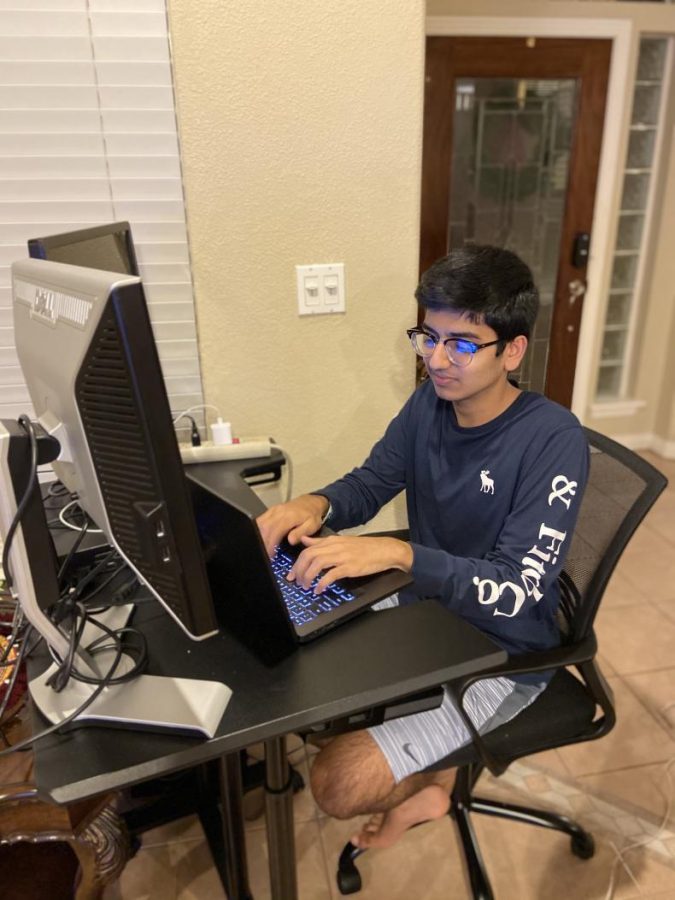
![In one of the newly made garden beds, Christopher Li '25 sets a plant in the soil. He collected a variety of plants and seeds to include in the garden. "I also collected [a lot of the seeds I sowed] outside in neighborhoods, parks, and sometimes on the side of the road," Li said.](https://westwoodhorizon.com/wp-content/uploads/2024/10/DSC_0037-600x397.jpg)
